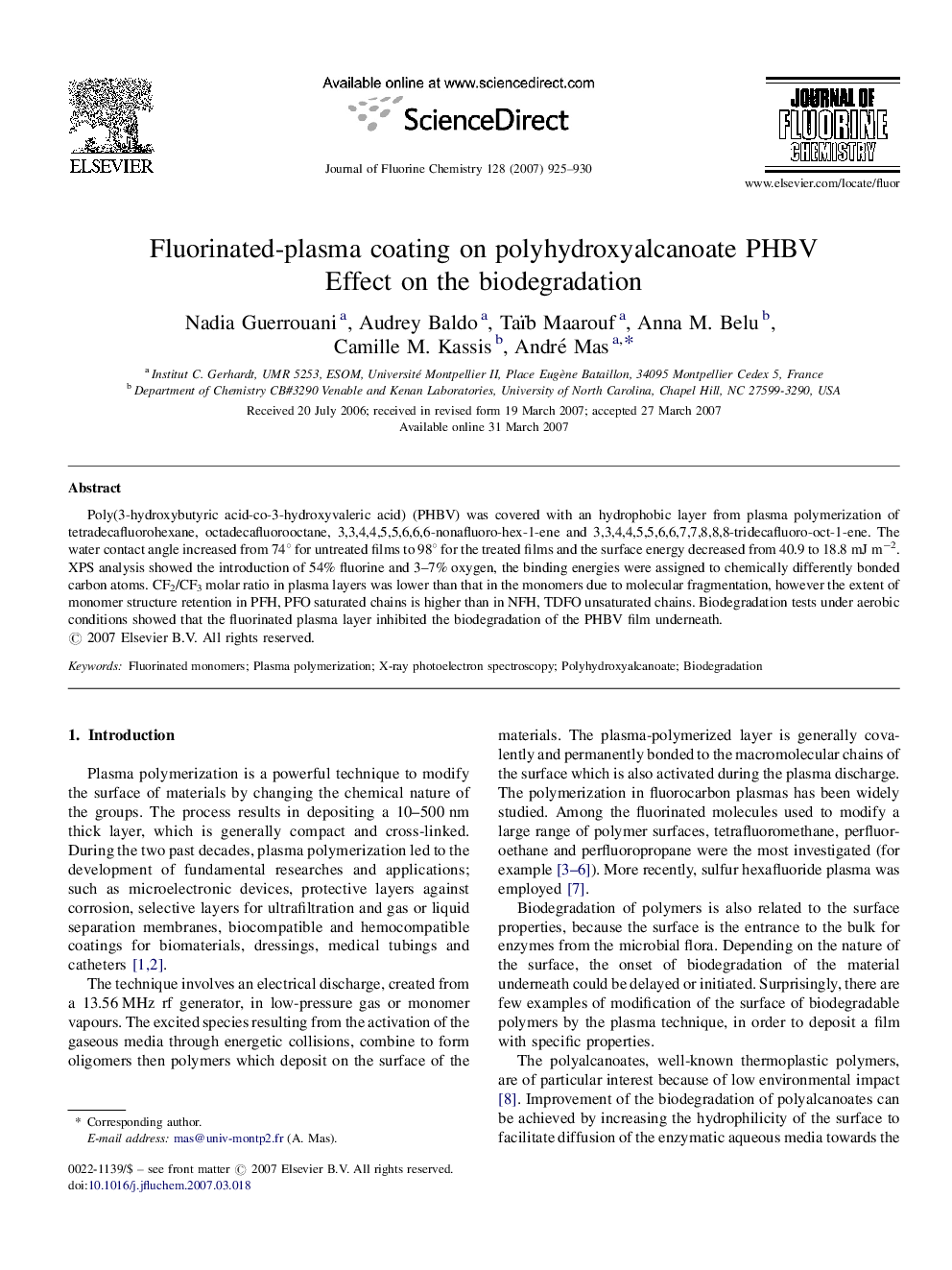| کد مقاله | کد نشریه | سال انتشار | مقاله انگلیسی | نسخه تمام متن |
|---|---|---|---|---|
| 1315553 | 976044 | 2007 | 6 صفحه PDF | دانلود رایگان |

Poly(3-hydroxybutyric acid-co-3-hydroxyvaleric acid) (PHBV) was covered with an hydrophobic layer from plasma polymerization of tetradecafluorohexane, octadecafluorooctane, 3,3,4,4,5,5,6,6,6-nonafluoro-hex-1-ene and 3,3,4,4,5,5,6,6,7,7,8,8,8-tridecafluoro-oct-1-ene. The water contact angle increased from 74° for untreated films to 98° for the treated films and the surface energy decreased from 40.9 to 18.8 mJ m−2. XPS analysis showed the introduction of 54% fluorine and 3–7% oxygen, the binding energies were assigned to chemically differently bonded carbon atoms. CF2/CF3 molar ratio in plasma layers was lower than that in the monomers due to molecular fragmentation, however the extent of monomer structure retention in PFH, PFO saturated chains is higher than in NFH, TDFO unsaturated chains. Biodegradation tests under aerobic conditions showed that the fluorinated plasma layer inhibited the biodegradation of the PHBV film underneath.
A hydrophobic coating (γs = 18.8 mJ m−2) from plasma-polymerization of saturated and unsaturated fluorinated monomers, that delays the biodegradation of PHBV.Figure optionsDownload as PowerPoint slide
Journal: Journal of Fluorine Chemistry - Volume 128, Issue 8, August 2007, Pages 925–930